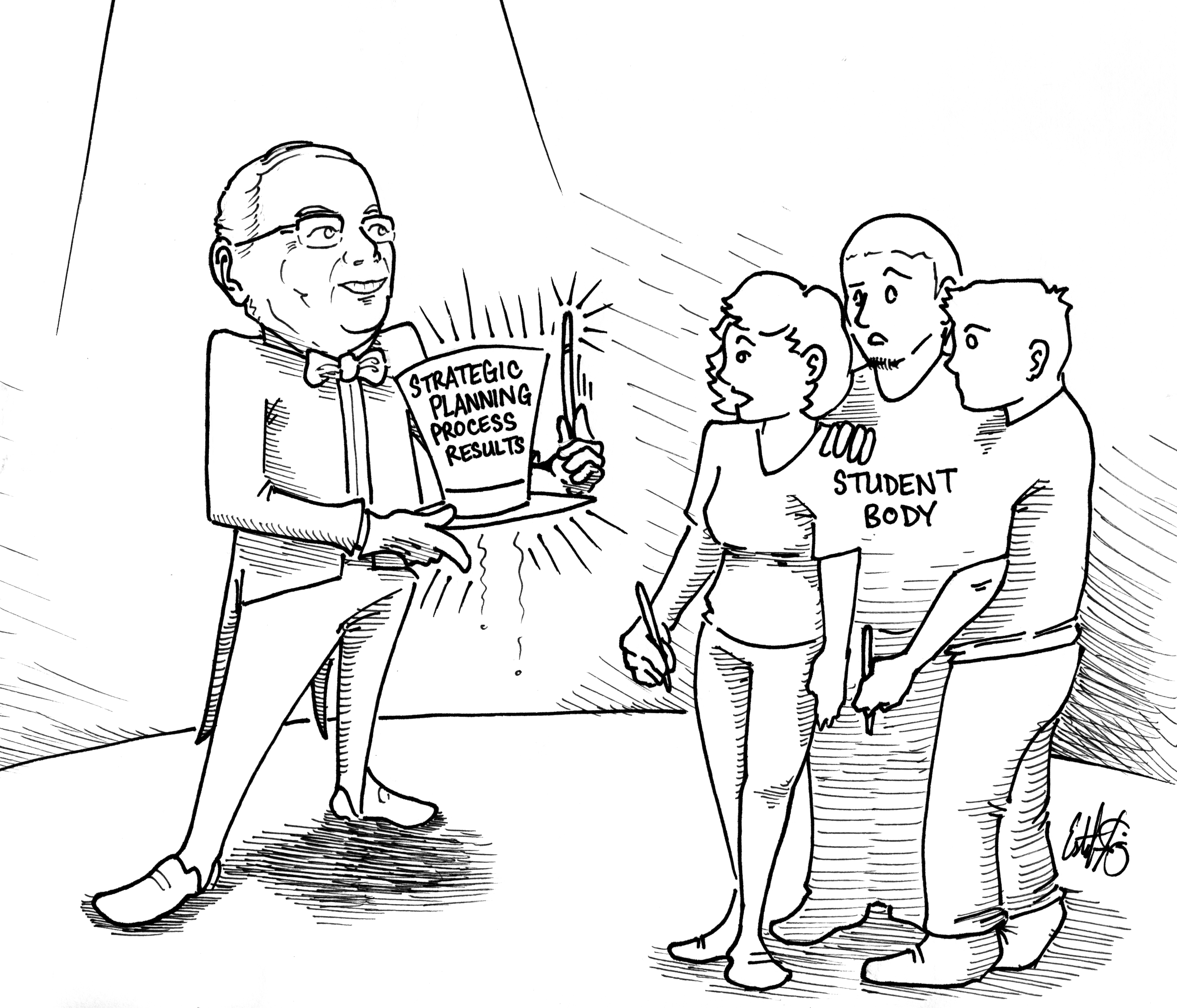Baylor’s strategic planning effort, responsible for gathering information from the Baylor community and drafting a plan for the future, will end its period of community input.
Since December, the university has sought opinions and statements from the Baylor community regarding concerns on campus and hopes for Baylor’s future. From “Envisioning the Future,” a document by Dr. Elizabeth Davis, executive vice president and provost, questions arise about how Baylor can deal with the ever-rising cost of college and potential social, spiritual and physical programs on campus.
The chance has passed to provide input, and the next step is synthesis and analysis. The strategic planning website describes a report to be written and delivered to President Ken Starr, Davis and the rest of the members of the Executive Council.
There is no problem in creating a document confidential to the aforementioned people, but Baylor should consider showing the significant findings from the input to the Baylor community.
With the current process, the Baylor community will not be told of the trends seen in the community input until Starr and the executive council take the synthesis and analysis report and write a draft plan incorporating Baylor’s vision, mission and community input.
Even then, the draft plan must be approved by the Baylor Board of Regents before the Baylor community can provide feedback.
Nowhere does the website mention the community being able to see the raw numbers and comments of their input as a whole.
There are times when information must be kept confidential to improve efficiency, but strategic planning does not appear to be one of those times.
It is true that people can give a thumbs up or thumbs down to the draft plan, but they will never know how much of the community’s input impacted the plan.
Also, the openness of information would lead to accountability of the administration. If the community input is made public knowledge, it is likely that role played by the community will be greater and the weight of input would be more.
Individual members of the Baylor community do not know how the rest of the community views issues beyond their own thoughts and those with whom they communicate.
To gain a greater understanding of the people around them, those who participated in community input, and even those who did not, should be aware of what concerns the community wants its administration to address. Displaying the prevailing trends would therefore serve to further bring the Baylor community together.
The community will also have the chance to better analyze the draft plan, knowing what the community wants as a whole.
There is no harm that could come with telling Baylor students, faculty, staff and alumni what their input reveals about Baylor.
The result would be a well-informed body, unified in knowledge.
Thus, we call for the opportunity to see the input received by Baylor in order to make judgments for ourselves about the draft plan, for to be fully informed is the best way to evaluate the plan for the future.



